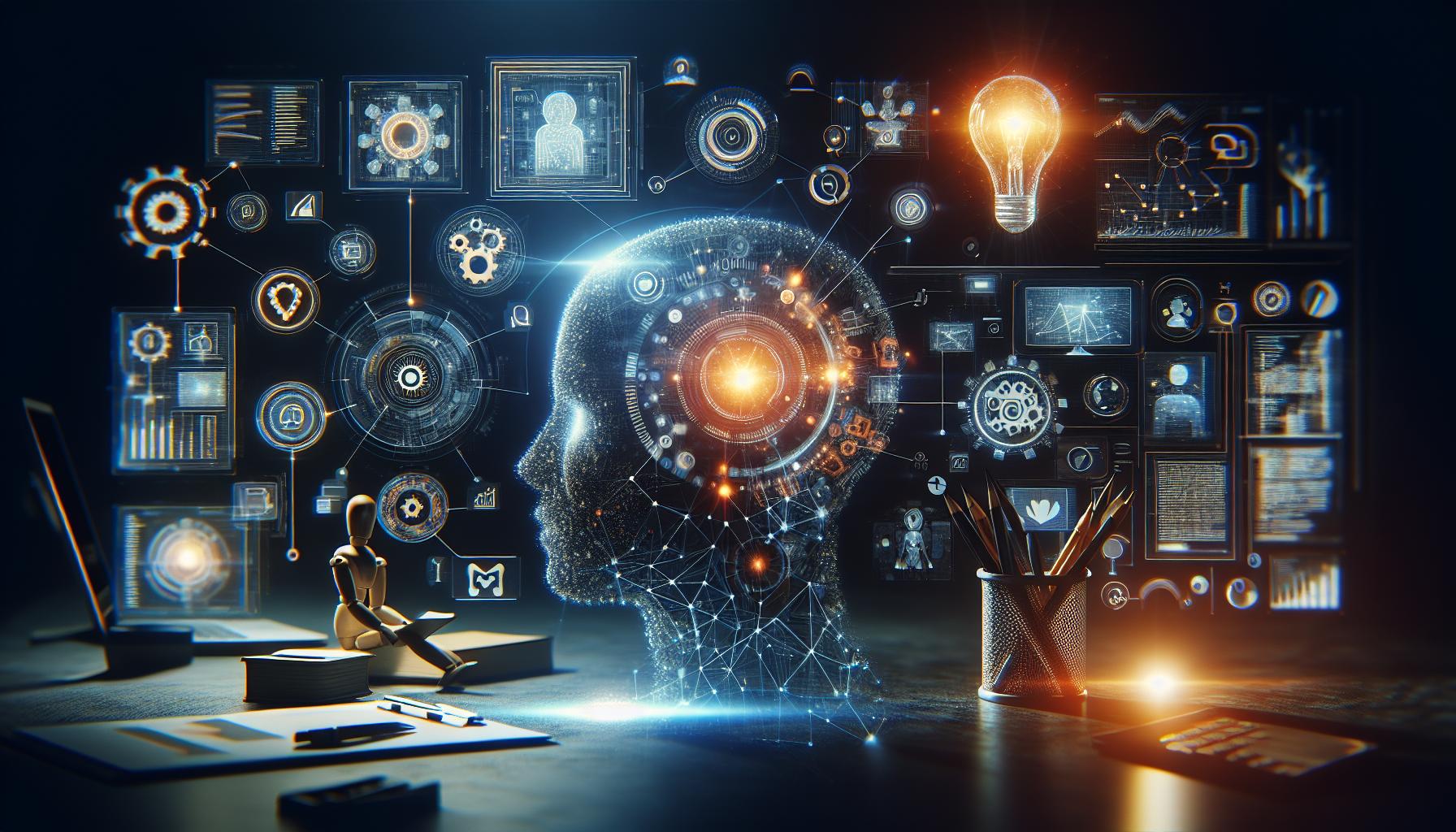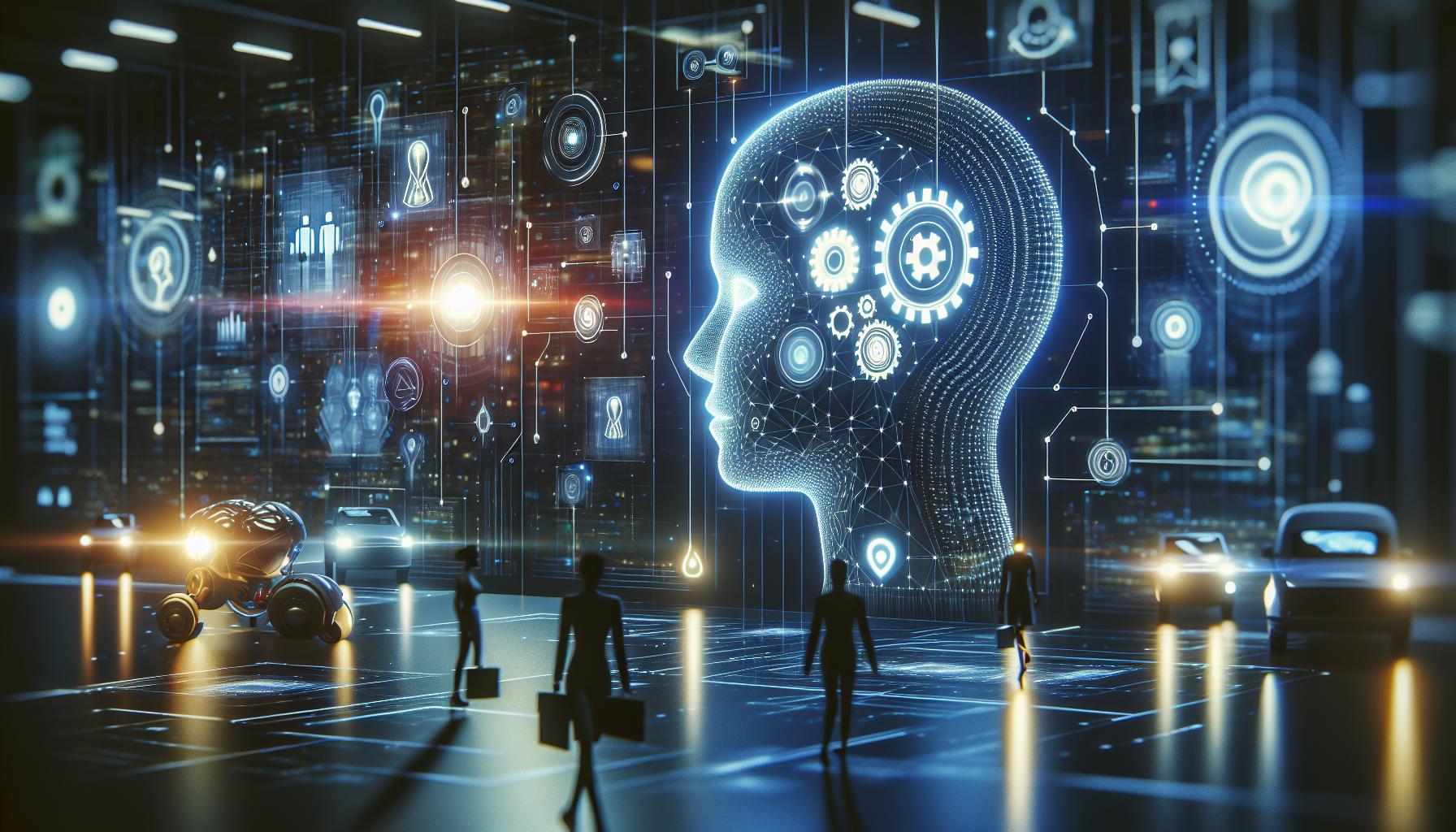As academic institutions increasingly integrate artificial intelligence into learning environments, questions arise about the implications for academic honesty. Understanding how platforms like Blackboard can identify AI-generated content is crucial in safeguarding integrity in education.This exploration addresses the pressing challenges institutions face as they adapt too evolving technological landscapes and maintain standards of authenticity.
Understanding the Role of AI in Academic Integrity
Exploring the Impact of AI on Academic Integrity
As artificial intelligence (AI) becomes increasingly integrated into educational environments, it presents both opportunities and challenges for maintaining academic integrity. The emergence of elegant AI tools has transformed the way students approach learning and assessment.While these technologies can enhance understanding and facilitate research,they also raise notable concerns about the potential for academic dishonesty. In this context, the question arises: Can Blackboard detect AI? This question encapsulates the broader challenge of ensuring that users engage with AI ethically and responsibly.
- AI tools should be used as facilitators of learning,helping students clarify concepts and explore new topics.
- Schools are encouraged to implement policies that require students to disclose their use of AI in assignments, promoting clarity.
- Educators must cultivate a culture of academic honesty that encourages critical thinking over reliance on AI-generated content.
AI Tools: A Double-Edged Sword
While AI tools can support academic pursuits by providing valuable resources and enhancing comprehension, they also pose risks for students tempted to misuse their capabilities.For instance, some may rely on AI to generate essays or solve problems without engaging with the material themselves, leading to superficial learning outcomes. To combat this tendency, institutions like Blackboard are exploring methods to detect AI-generated submissions. in addition to detection technology, fostering an environment of academic integrity involves educating students about the ethical implications of AI usage in their work [1].
| Pros of AI in Education | Cons of AI in Education |
|---|---|
| Enhanced research capabilities | plagiarism risks |
| Personalized learning experiences | Superficial understanding of material |
| Accessibility to diverse resources | Dependence on technology |
Strategies for Upholding Academic Integrity
To navigate these complexities, educators can implement proactive strategies aimed at reinforcing academic integrity in the face of AI advancements. One effective approach is to incorporate discussions about academic honesty and the ethical use of AI into the curriculum. Including modules on the implications of AI misuse can equip students with a deeper understanding of their responsibilities. Furthermore, utilizing tools that detect AI applications can serve as a deterrent against dishonest practices. By fostering an atmosphere of integrity and open communication, institutions can better prepare students to harness AI as a tool for genuine learning instead of a shortcut to circumvent academic rigor [2].
As the landscape of education evolves, the dialogue surrounding AI’s role in academic integrity will become increasingly vital. Understanding these dynamics can help institutions and students alike to navigate the challenges posed by AI and reinforce the values of honesty and integrity in academia.
How Blackboard Monitors Student Submissions: An Overview
Understanding Blackboard’s Submission Monitoring
In the age of digital education, maintaining academic integrity is more crucial than ever. Blackboard, a leading learning management system (LMS), employs a variety of tools to monitor student submissions and uphold standards. One of its standout features is SafeAssign, designed primarily to detect plagiarism by comparing student work against a vast database of academic papers, publications, and internet sources. Though, its capabilities regarding AI-generated content are somewhat limited, sparking debates about its effectiveness in the face of emerging technology.While Blackboard’s SafeAssign can identify copied material, it cannot directly detect AI-generated text. This limitation presents a challenge as students increasingly use AI tools to produce written assignments.Educators are encouraged to be proactive in addressing this issue by enhancing their own understanding of AI technologies and adapting assessment methods accordingly. For instance, incorporating oral presentations or in-class writing assignments can provide choice means of evaluating student knowledge and creativity.
Proactive Strategies for Instructors
To effectively combat potential academic integrity challenges—including those posed by AI usage—educators should consider the following strategies:
- Promote Originality: Encourage students to express their unique voices in their work, emphasizing the importance of personal insights and critical thinking.
- Implement Varied Assessment Types: Utilize diverse methods, such as group projects, presentations, and reflective essays, which are less susceptible to AI manipulation.
- Educate on Academic Integrity: Provide resources and discussions about academic honesty, the consequences of plagiarism, and the ethical use of AI tools.
- Incorporate Technology Wisely: Leverage tools that assess writing style and patterns,which may help in identifying inconsistencies in submissions that could indicate AI use.
navigating the challenges of AI in academic submissions requires a multifaceted approach that includes not only robust monitoring but also proactive teaching strategies. As the landscape of education evolves, adapting to these changes will be key to maintaining the integrity of student work. By understanding both the capabilities and limitations of Blackboard and integrating innovative assessment practices, educators can continue to uphold academic standards while embracing new technologies.
The Evolution of AI Detection Tools in Education
The Rise and Challenges of AI Detection Tools in Educational Settings
As educational institutions increasingly integrate technology and artificial intelligence into their teaching environments, the emergence of AI detection tools has prompted significant debate about academic integrity. These tools are designed to identify whether a piece of writing has been generated by AI, prompting questions like “Can Blackboard detect AI?” Although appealing in theory, the practical application of these technologies reveals several crucial challenges.Despite a growing market, many of the AI detection tools available suffer from high error rates. Studies have shown that they often produce false positives, wrongly flagging student work as AI-generated when it is not. As an exmaple, a recent analysis of various AI detection systems demonstrated that the technology can mistakenly accuse students of misconduct due to its inability to accurately gauge the nuances of human writing compared to that of AI-generated content [1[1[1[1]. As these tools continue to develop, it’s essential for educators to understand both their capabilities and their limitations.
Moreover, the issue of academic integrity is further elaborate by privacy concerns, as many detection tools require the collection of student data to train their systems. This data collection raises ethical questions about consent and surveillance in educational environments [2[2[2[2]. Institutions must navigate these challenges carefully, ensuring that the pursuit of integrity does not infringe upon student rights or compromise the learning experience.
Practical Steps for Educators
To effectively address the challenges posed by AI detection tools, educators can consider the following actionable strategies:
- Implement transparent policies: Clearly communicate how AI detection tools will be used and what constitutes academic dishonesty.
- Educate students: Offer workshops on what constitutes original work and how to avoid unintentional plagiarism.
- Leverage multiple assessment methods: Incorporate diverse evaluation forms, such as reflective essays or oral presentations, that are less susceptible to AI interference.
By adopting these strategies, educational institutions can foster a culture of integrity that not only discourages academic dishonesty but also embraces the responsible use of AI technologies in learning. As the tools evolve,ongoing discussions about their efficacy and ethics will be key to navigating the complex landscape of academic integrity challenges in today’s digital age.
Identifying AI-Generated Content: Techniques and Challenges
Understanding AI-Generated Content Detection
The rise of AI-generated content presents a significant challenge in maintaining academic integrity. Traditional methods of plagiarism detection may not effectively identify the subtleties of machine-generated texts,complicating the task for educators and institutions. While tools like Turnitin have added features to assess the likelihood of AI involvement, these systems often provide misleading results. According to reports, the AI detection scores can vary widely and do not necessarily indicate true academic misconduct, raising questions about their reliability[[[[[2](https://provost.uky.edu/news/upholding-academic-integrity-and-ensuring-fairness-ai-detection)].
Techniques for Detection
Detecting AI-generated writing requires a multi-faceted approach, as no single solution can provide absolute certainty. Here are some effective strategies that can be employed:
- Textual Analysis: Educators are encouraged to engage in close reading of submitted texts, assessing style, coherence, and argument structure to detect anomalies.
- AI Detection Tools: While not foolproof, these tools can serve as a preliminary filter. However,their high error rate necessitates careful interpretation of results [[3](https://mitsloanedtech.mit.edu/ai/teach/ai-detectors-dont-work/)].
- Oral Examinations: Incorporating oral assessments enables educators to gauge a student’s understanding of their written work, providing a direct measure of ownership and comprehension.
- Revision Submissions: asking students to revise their work based on feedback can reveal their writing process and authentic voice, making it easier to spot inconsistencies typical of AI-generated content.
Challenges in Identification
Despite the techniques available, identifying AI-generated content remains fraught with challenges. The subtlety of advancements in AI text generation means that some outputs may closely mimic human writing patterns, thus passing unnoticed. Furthermore, educators may inadvertently fall into the trap of misidentifying genuine student work as machine-generated, perhaps leading to unjust academic repercussions.
In this evolving landscape, it is indeed vital for institutions to develop comprehensive policies and training on AI’s implications in academia. Awareness and ongoing education about AI tools and their limitations can empower instructors to approach detections with caution and fairness.
| Technique | Pros | Cons |
|---|---|---|
| Textual Analysis | Deep understanding of writing style | Time-consuming and subjective |
| AI Detection Tools | Quick preliminary checks | High error rates, may mislabel human writing |
| Oral Examinations | Direct assessment of knowledge | Resource-intensive, may not scale well |
| Revision Submissions | Encourages active learning and revision skills | Potentially increases workload |
By addressing these techniques and understanding the challenges, educators can better navigate the complex landscape of AI in academic settings, ensuring a fair assessment environment for all students.
Ethical Considerations in Using AI for Academic Supervision
Understanding the Ethical Implications of AI in Academic Supervision
As educational institutions increasingly navigate the complexities introduced by artificial intelligence, the ethical considerations surrounding its use in academic supervision become paramount. This technology,while offering significant advancements in efficiency and personalized learning,also poses serious challenges regarding academic integrity. with tools like Blackboard being scrutinized for their ability to detect AI-generated content, it is indeed crucial to foster an environment where ethical standards are clearly defined and upheld.
One of the primary ethical concerns is the potential for AI to create an environment conducive to plagiarism. Students may be tempted to use AI tools to generate essays or complete assignments, which not only undermines their own learning but also violates principles of academic honesty.It is essential for educational leaders to clearly communicate that while AI can be a valuable resource for enhancing understanding, misusing it constitutes a breach of trust and academic integrity. To combat this, institutions can implement educational programs that emphasize the importance of original work and the ethical use of technology.
Furthermore, the reliance on AI raises questions about the fairness and equity of assessment. Are students who use AI tools at an advantage over those who engage deeply with their studies? This disparity can lead to a lack of confidence among learners, particularly if they feel that academic supervision favors those with access to sophisticated technology. Institutions must strive to develop guidelines that ensure assessment practices remain equitable. This could involve regular updates to monitoring tools and techniques, as well as training educators to recognize the nuances of AI involvement in student submissions.
Strategies for Upholding academic Integrity
To maintain academic integrity in the era of AI,institutions should consider the following strategies:
- Educate students and faculty: Workshops and seminars on ethical AI use can clarify expectations and consequences.
- Update institutional policies: Adapt academic integrity policies to explicitly include AI-related misconduct.
- Encourage critical thinking: Foster an environment that prioritizes analytical skills over rote memorization or shortcut solutions.
- Implement effective detection tools: Regularly update and enhance tools like Blackboard to improve their ability to detect AI-generated content.
These proactive measures can help ensure that as institutions explore the capabilities of AI, they do so in a manner that promotes ethical behavior and academic integrity, addressing the vital question of “Can Blackboard Detect AI? Academic Integrity Challenges.” Ultimately, by balancing innovation with ethical obligation, educators can guide students through this evolving landscape.
The Impact of AI on Traditional Assessment Methods
The Shift in Assessment Paradigms
The rise of artificial intelligence is fundamentally altering traditional assessment methods in educational settings. With tools capable of generating text and solving complex problems, there is a growing concern about the integrity of assessments. In the context of the challenge discussed in the article ‘Can Blackboard Detect AI? Academic Integrity challenges’, educators face a pressing question: how can they ensure that assessments accurately reflect student understanding without being undermined by AI-generated content?
One major impact of AI on assessments is the increasing difficulty in distinguishing between student-generated work and AI-assisted outputs. This dilemma not only complicates grading but also challenges educators to rethink the very essence of what assessments should measure. Traditional methods, which often rely on written essays and problem-solving tasks, may need to evolve. Educators might consider integrating more interactive assessments, such as oral presentations or practical projects, which are harder for AI to replicate. Such as, incorporating peer review processes can also foster a more engaging learning environment where students critically assess each other’s work, thereby enhancing their understanding.
Adapting to a New Assessment Landscape
As academic integrity concerns mount, institutions must proactively adapt their assessment strategies. This might include developing AI literacy programs for both students and faculty, emphasizing the ethical use of technology. furthermore, assessments can be designed to analyze not just the correctness of answers but also the process by which students arrive at their conclusions. As a notable example, reflective assessments can encourage learners to articulate their thinking process, making it easier to identify original thought versus AI-generated responses.
Additionally, AI assessments should include built-in methods to test outputs for accuracy and consider potential biases, as highlighted in recent discussions on fair assessment practices. By adapting evaluations to embrace the strengths of AI while mitigating its challenges, educators can cultivate an environment that values genuine understanding and creativity.
| Traditional Assessment methods | AI-Affected Challenges | Recommended Adaptations |
|---|---|---|
| Written Essays | AI can generate essays quickly. | Incorporate oral presentations or practical projects. |
| Multiple Choice Questions | Can be easily compromised by AI tools. | Use scenario-based questions that require description. |
| Standardized Tests | AI can provide answers without comprehension. | Focus on reflective assessments and skill applications. |
In addressing the impact of AI on assessment, educational institutions are compelled to innovate.Not only must they strive to ensure academic integrity, but they also have the prospect to enrich the learning experience, prompting deeper engagement among students. As we navigate these academic integrity challenges, stakeholders must collaborate to redefine assessments that genuinely reflect knowledge and skills in an era dominated by technology.
Strategies for Educators to Maintain Academic Integrity
Innovative Approaches to Uphold Integrity in Academic Environments
In a world where advanced AI tools are readily accessible, it’s crucial for educators to adopt innovative strategies that promote academic integrity. Traditional methods of assessment are being challenged by AI-generated content, making it essential to rethink how assignments are created and evaluated. By proactively addressing these challenges, educators can cultivate an environment that values honesty and originality.
- Incorporate Authentic Assessments: Designing assignments that require personal reflection, real-world applications, or collaborative projects can deter students from resorting to AI-generated solutions. For example, an assignment that asks students to analyze a local issue and propose a solution encourages them to draw on personal experiences and local data.
- Provide Clear Guidelines: Clarity is key when it comes to expectations surrounding academic integrity. Faculty should outline what constitutes valid collaboration versus cheating and explicitly state the repercussions of dishonesty.Detailed syllabi that explain these factors can definitely help create a culture of transparency.
- Leverage Technology Wisely: While tools like Blackboard offer features aimed at maintaining academic integrity, it’s critically important to complement this with additional resources.Incorporating AI detection software, where appropriate, can also serve as a deterrent, but it is indeed vital to couple it with educational sessions about why academic integrity matters.
Fostering a Culture of Integrity
Creating a climate of trust within the classroom enhances student engagement and responsibility.educators can play a pivotal role by openly discussing the ethical implications of using AI in writing. Regular workshops or seminars discussing these themes can definitely help students understand the importance of academic honesty, especially in light of the advancements in AI technology.
| Strategy | Description | Example |
|---|---|---|
| Authentic Assessments | Assignments that require personal input and real-life applications | Case studies in local issues |
| Clear Guidelines | Explicit definitions of academic integrity violations | Detailed syllabi and academic integrity handbooks |
| Technology Integration | Use of AI detection tools alongside education | workshops on ethical AI use |
by implementing these strategies, educators can stay ahead of the challenges presented by AI in academic contexts, ensuring that integrity remains at the forefront of educational values. By fostering a pedagogical atmosphere that emphasizes originality and ethical behavior,institutions can mitigate the risks associated with AI-generated content while empowering students to develop their critical thinking and creativity.
Future trends: Will AI detection Tools Keep Up with Advancements?
As artificial intelligence continues to evolve at a rapid pace, the ability of detection tools to differentiate between human and machine-generated content becomes increasingly crucial. the primary challenge facing educational institutions revolves around ensuring academic integrity in an age where students can easily leverage powerful AI tools.While current AI detectors claim to aid in identifying AI-generated work, reliance on these systems raises questions about their effectiveness and continued relevance.
- Rapid Evolution of AI Writing Tools: As tools like ChatGPT and other generative models improve, they are becoming better at mimicking human writing styles. this continuous evolution means that AI detection tools must also advance alongside these technologies to remain effective.
- High Error Rates in Detection Systems: Recent studies have highlighted significant shortcomings in AI detection software, indicating that false positives could lead to unwarranted accusations against students. Instructors may face challenges in accurately interpreting results, prompting discussions about the need for better training and understanding of these tools within educational contexts [[3]](https://mitsloanedtech.mit.edu/ai/teach/ai-detectors-dont-work/).
- Integration of Ethical Considerations: Institutions must weigh the balance between leveraging technology for academic integrity and respecting student privacy. The use of AI detection systems frequently enough involves collecting and analyzing student data, raising ethical concerns that need addressing[[[[[1]](https://qilt.qu.edu/ai/academic-integrity-and-ai-detectors).
Practical Steps for Educators
To navigate these challenges, educators can adopt several actionable strategies:
| Strategy | Description |
|---|---|
| Invest in Training | Provide professional development for educators on the strengths and limitations of AI detection tools to foster informed decision-making. |
| Promote Awareness | Encourage discussions about the ethical implications of AI usage and the importance of academic honesty among students. |
| Implement Multimodal Assessment | Develop diverse evaluation methods that include presentations, group work, and oral exams to diminish reliance on written submissions that may be easily AI-generated. |
As we ponder future trends in tools designed to detect AI-generated content,the focus must shift towards adaptability and robust policies that not only embrace technological advancements but also safeguard the principles of academic integrity.Institutions that proactively address these dynamics will be better equipped to support their educators and students while adapting to this rapidly changing landscape.
Balancing Innovation and Integrity: A Dialogue on AI Usage in Academia
The rise of artificial intelligence (AI) in educational settings has transformed the landscape of learning and assessment, prompting urgent discussions about academic integrity. As tools like blackboard evolve to incorporate sophisticated features aimed at detecting AI-generated content, institutions must navigate the delicate balance between fostering innovation and upholding ethical standards in education. With concerns about the potential misuse of AI for cheating becoming increasingly prevalent, faculty, students, and administrators face the pressing challenge of ensuring that academic integrity remains intact.
The Dual-Edged Sword of AI in Academia
Artificial intelligence, while a powerful ally in personalized learning and academic support, poses significant risks to traditional assessment methods. Tools that allow for instantaneous content generation can diminish the authenticity of student submissions, leading to questions about ownership and effort. Institutions must critically examine their assessment strategies and consider integrating AI responsibly. Encouraging creativity alongside critical thinking can mitigate risks associated with AI misuse.
To effectively confront the challenges outlined in discussions about whether Blackboard can detect AI-generated work, educational institutions should adopt proactive strategies:
- Educational Workshops: Conduct workshops for students on the ethical use of AI tools to foster a culture of integrity.
- Revised Assessment Strategies: Implement diverse assessments that encourage original thought and creativity, such as open-ended projects or oral presentations.
- Clear Policies: Establish clear guidelines regarding the acceptable use of AI technology in assignments to set expectations for academic honesty.
Technological Innovations for Detection
As AI technology grows more sophisticated, so too do the methods for detecting its use in academic work. Institutions can leverage tools specifically designed to identify AI-generated content or unusual writing patterns that may suggest academic dishonesty. For instance, some universities are piloting AI detection software that closely analyzes submission styles and linguistic patterns. Integrating these technologies alongside traditional educational practices not only aids in maintaining integrity but also sparks discussions about the evolving relationship between technology and education.
Ultimately,the conversation about balancing innovation and integrity in academia necessitates collaboration among stakeholders. Engaging faculty and students in dialogue about their experiences and expectations concerning AI utilization can lead to more informed policies and practices.As higher education adapts to these changes, the focus should remain on cultivating an environment where technological advancements enhance—not compromise—the core values of learning and assessment.
Preparing Students for an AI-Driven Educational Landscape
As artificial intelligence rapidly reshapes the educational landscape, understanding the implications of AI technologies like Blackboard on academic integrity becomes essential. Educators and students alike must navigate a world where AI-generated content can blur the lines of original thought and academic honesty. With this technological shift, the challenge is not just to detect AI use but also to prepare students for effective engagement in an AI-driven environment.
Understanding AI Integration in Education
Incorporating AI into educational settings presents both opportunities and challenges. Institutions must address the ethical concerns surrounding AI, primarily focusing on academic integrity. The presence of AI tools can unintentionally lead to an increase in academic dishonesty,as students might be tempted to submit AI-generated work without proper attribution. To combat this,it is crucial to foster a culture of integrity and trust,where students are encouraged to utilize AI responsibly.
Building AI Literacy Among Students
To prepare for an AI-centric educational future, students need to develop strong AI literacy. This includes:
- Understanding AI capabilities: Students should learn how AI can assist in their studies and where its limitations lie. This knowledge helps them use AI tools to enhance their learning without compromising integrity.
- Ethical Use of AI: Courses on ethics and responsible use of technology can equip students with the frameworks necessary to navigate issues surrounding AI, including copyright concerns and academic integrity.
- Critical Thinking Skills: Developing critical thinking and analysis skills is vital. By learning to evaluate AI-generated content critically, students can better discern the quality of information and maintain high academic standards.
Practical Steps for Educators
Educators play a pivotal role in guiding students through the challenges posed by AI technologies. here are some actionable strategies:
- Integrate AI Education: Incorporate lessons about AI and academic integrity into curricula, ensuring that students understand both the tools’ capabilities and ethical implications.
- Set clear Guidelines: Develop clear policies regarding the use of AI tools like Blackboard. Outline acceptable uses and the consequences of academic dishonesty, reinforcing the importance of original work.
- Encourage Collaboration: Promote group projects that encourage collaboration and critical discussion around AI tools. This helps students learn together and establish a common understanding of ethical standards.
Ultimately, requires a multidimensional approach that combines ethical training,AI literacy,and strong academic support systems. As educators navigate the complex terrain marked by tools that challenge traditional notions of authorship, strategies such as fostering a culture of integrity and collaboration will be key to cultivating responsible future leaders.
To Conclude
the question of whether Blackboard can detect AI-generated content is pivotal in the ongoing discourse about academic integrity. As institutions increasingly integrate AI into educational environments, tools like blackboard must advance their capabilities to ensure authenticity in student submissions. Understanding both the potential and limitations of AI detection technologies is crucial for educators and students alike. By delving deeper into these discussions, stakeholders can foster a culture of integrity while navigating the complexities posed by AI in academia. We encourage you to explore further into this topic, considering not only technological implementations but also the ethical implications of AI usage in educational settings.Engaging with these challenges will not only enhance understanding but also drive innovations aimed at sustaining academic standards in a rapidly evolving digital landscape.













